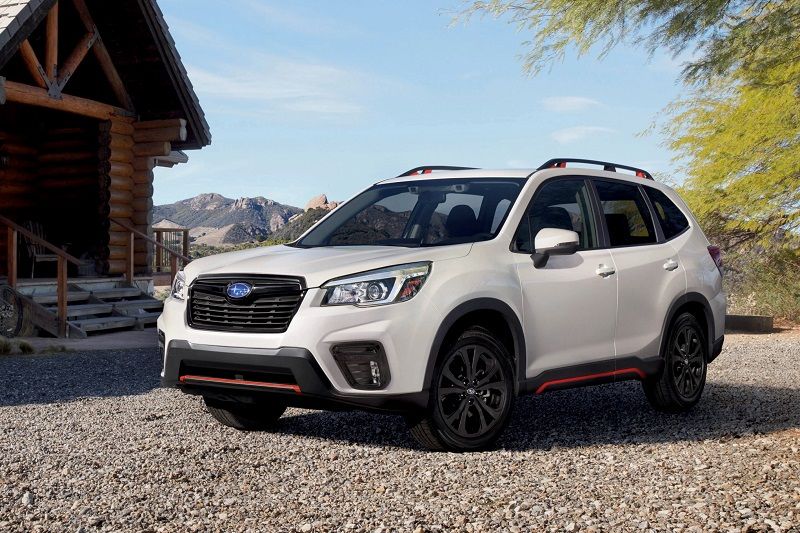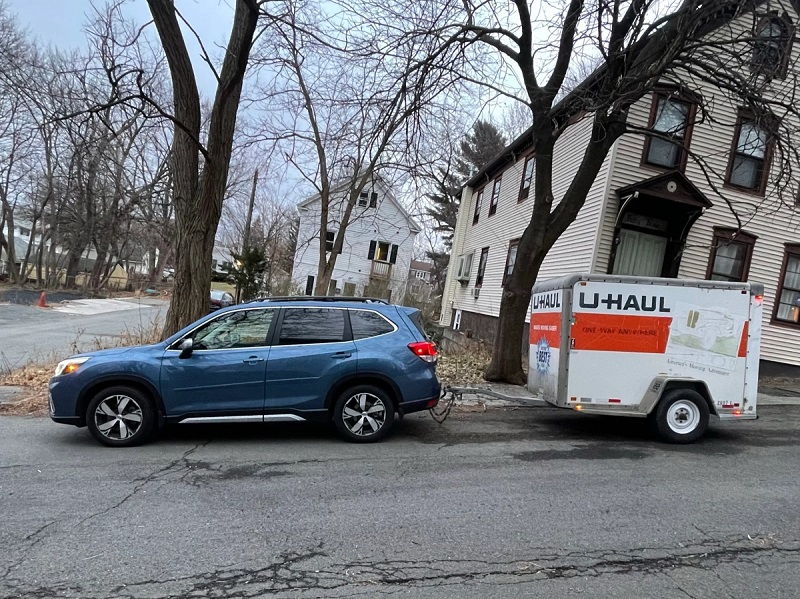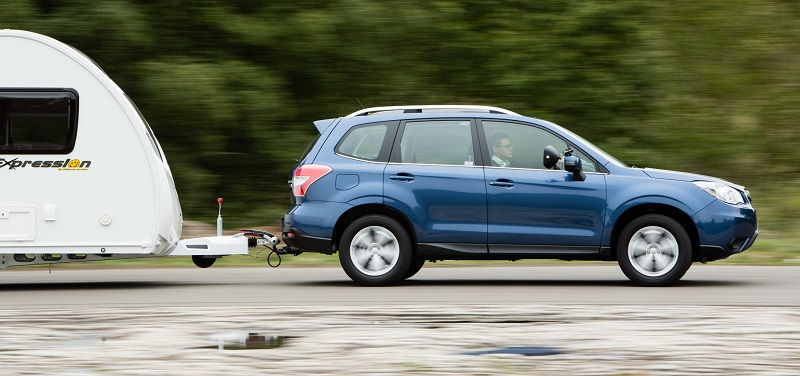This post contains affiliate links. This means I will make a commission at no extra cost to you should you click through and make a purchase [ “As an Amazon Associate, I earn from qualifying purchases.” ]. Read the full disclosure here.
How Much Can A Subaru Forester Tow GuideMechanic.Com The Subaru Forester first came on the scene in 1997 as the Japanese car manufacturer’s new compact SUV model.
Initially designed as a crossover between a car and an SUV, the first generation Forester was built on the Impreza platform and was equipped with all-wheel-drive.
It quickly gained popularity due to its versatility, reliability, and affordability. The Forester has continued to evolve over the years, with each new generation offering improved features and performance.
Today, it remains a popular choice for car buyers looking for a reliable and practical SUV that is also fun to drive.
See Also: P0031 Subaru: How to Repair
The Subaru Forester has truly made a name for itself as a crossover SUV that can handle anything from daily commuting to camping trips to weekend getaways with ease, making it a great choice for families and adventurous drivers alike.
Towing Capacity Of The Subaru Forester

The Subaru Forester is a popular compact SUV that is equipped with a powerful engine and a sturdy build, making it a great choice for drivers looking for a reliable and versatile vehicle.
One key feature that many drivers look for in an SUV is its towing capacity, and the Forester does not disappoint in this regard.
The vehicle has a towing capacity of up to 1,500 pounds when properly equipped, which allows it to easily handle a wide range of towing tasks.
Whether you need to haul a small trailer, a boat, or other equipment, the Forester’s towing capacity makes it a great choice for drivers who need a vehicle that can handle heavy loads.
Additionally, the Forester’s all-wheel drive system provides additional traction and stability when towing, making it a safe and reliable choice for drivers in a variety of weather conditions.
Overall, the towing capacity of the Subaru Forester is a key feature that makes it a great choice for drivers looking for a versatile and capable SUV.
Explanation Of The Term Towing Capacity
Towing capacity is a term used to describe the maximum weight a vehicle is capable of pulling or towing behind it.
This weight includes not only the weight of the trailer being towed but also the weight of any cargo or passengers in the vehicle itself.
See Also: P2096 Subaru: Diagnosing and Repairing
The towing capacity of a vehicle is typically determined by its engine power, transmission, brakes, suspension, and frame strength.
It is important to understand a vehicle’s towing capacity before attempting to tow anything, as exceeding the listed limit can result in damage to the vehicle and potential danger to those in and around it.
Additionally, different types of tow hitches and tow bars can also have their own weight limits, so it is important to verify that all components of the towing system are compatible and rated for the intended load.
Official Towing Capacity Of The Forester According To Subaru
The official towing capacity of the Subaru Forester varies depending on the year and model of the vehicle. According to Subaru, the towing capacity of the 2021 Forester is up to 1,500 pounds when properly equipped.
This towing capacity is made possible by a strong engine, as well as a range of advanced features like trailer stability control and hill descent control.
It is important to note that not all Forester models are equipped for towing, and towing capacity can also be affected by factors like cargo weight, passenger weight, and the weight distribution of the trailer being towed.
As always, it is important to follow all manufacturer guidelines and safety protocols when towing with any vehicle.
Factors That Affect The Foresters Towing Capacity

The towing capacity of a Forester is an important consideration for many drivers who want to use their vehicle for towing heavy loads. However, there are several factors that can affect the Forester’s towing capacity.
One of the most important factors is the engine size of the vehicle. Foresters with larger engines are typically able to tow larger loads than those with smaller engines.Another factor that can affect towing capacity is the type of transmission in the vehicle.
Foresters with automatic transmissions may have a higher towing capacity than those with manual transmissions.
See Also: P0026 Subaru: How to Diagnose and Repair
Additionally, the type of towing package installed on the vehicle can also play a role in determining its towing capacity.
Other factors that can affect the towing capacity of a Forester include the weight of the vehicle itself, the weight of any additional cargo and passengers, and the condition of the vehicle’s brakes and suspension.
It’s important to carefully consider all of these factors when determining the safe and appropriate weight for towing with a Forester.
How Much Can A Subaru Forester Tow
Gross Vehicle Weight Rating GVWR
Gross Vehicle Weight Rating (GVWR) is a term used to describe the maximum weight that a vehicle can weigh when fully loaded with payload , fuel, passengers, and any other accessories. This weight includes the weight of the vehicle itself, as well as the weight of all the items that it is carrying.
GVWR is an important factor to consider when selecting a vehicle, as it determines the amount of weight that the vehicle can safely carry.GVWR is typically determined by the manufacturer and is specified in the vehicle’s documentation.
Exceeding the GVWR limit can cause damage to the vehicle and its components, as well as pose a safety hazard due to the potential for loss of control or braking ability. Therefore, it is essential to ensure that the vehicle’s payload is within the specified GVWR limit.
In the case of commercial vehicles, the GVWR is regulated by federal laws and guidelines, and it is important to comply with these regulations to avoid penalties or fines.
In summary, GVWR is an important consideration for vehicle selection and operation, as it directly impacts the vehicle’s performance, safety, and compliance with regulations.
Curb Weight Of The Forester Model
The curb weight of the Forester model can vary depending on the specific year and trim level. For example, the 2021 Forester has a curb weight ranging from 3,449 to 3,631 pounds, depending on the trim level.
The base model has the lowest curb weight, while the higher-end trims have additional features and amenities that increase the weight.
Overall, the curb weight of the Forester is relatively light compared to other SUVs, allowing for better fuel efficiency and handling.
This makes the Forester a practical choice for those who prioritize fuel economy and nimble driving dynamics.
How Much Can A Subaru Forester Tow
Engine Size And Performance

Engine size and performance are crucial factors to consider when choosing a vehicle. The engine size, also known as engine displacement, refers to the total volume of all the engine’s cylinders.
A larger engine size typically means more power and higher performance, although it also typically means lower fuel efficiency.
Meanwhile, performance specifications include factors such as acceleration, top speed, and handling. These specifications are often influenced by the engine size, but they also depend on other factors such as the vehicle weight, transmission, and aerodynamics.
Therefore, it’s important to carefully consider both the engine size and performance specifications when selecting a vehicle to ensure it fits your needs and preferences.
How Much Can A Subaru Forester Tow
Transmission Type
Transmission type refers to the mechanism used to transfer power from the engine of a vehicle to its wheels.
There are several types of transmission, including manual, automatic, continuously variable, dual-clutch, and semi-automatic.
Manual transmissions rely on the driver to shift gears using a clutch pedal and a gear shifter. Automatic transmissions, on the other hand, use a hydraulic system to shift gears automatically.
Continuously variable transmissions use a system of belts and pulleys to provide a smooth and continuous range of gear ratios.
Dual-clutch transmissions use a pair of clutches to shift gears quickly and efficiently. Finally, semi-automatic transmissions combine features of both manual and automatic transmissions, allowing the driver to select gears manually or let the transmission shift gears automatically.
The choice of transmission type can have a significant impact on the vehicle’s performance, fuel efficiency, and overall driving experience.
How Much Can A Subaru Forester Tow
Trailer Weight And Type
Trailer weight and type are important considerations for anyone who is towing a trailer. The weight of the trailer and the type of trailer you choose can have a significant impact on your driving experience, safety and the performance of your vehicle.
When towing a trailer, it’s important to make sure that you have a vehicle with a sufficient towing capacity for the weight of the trailer you are towing. This information can typically be found in the vehicle’s owner’s manual or by consulting with a dealer.
The type of trailer you choose is also important. There are many different types of trailers available, including utility trailers, travel trailers, and fifth-wheel trailers.
Each type of trailer has its own set of advantages and disadvantages, and it’s important to choose the one that best suits your needs.
In addition to the weight and type of trailer, it’s also important to consider factors such as the terrain you will be traveling over, the conditions of the road, and your driving experience.
By taking these factors into consideration and choosing the right trailer and towing vehicle, you can ensure a safe and enjoyable towing experience.
- Coffee Food Trucks for Sale - July 12, 2025
- Pizza Food Trucks for Sale Ready to Use - July 12, 2025
- Vegan Food Trucks for Sale by Owner - July 12, 2025

